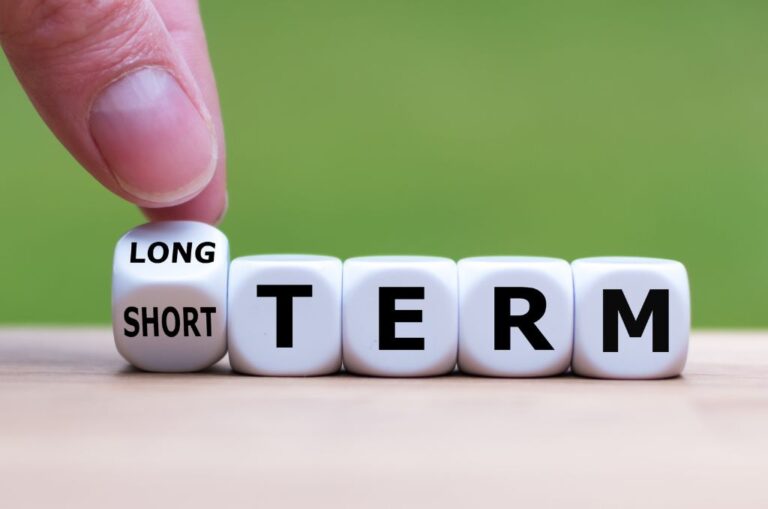Everyone has an overall idea of how they wish to spend their later years. And sometimes, an unplanned expense or event like the COVID 19 could be everything it takes to send those dreams packing, particularly in cases where you never saw it coming.
In a survey, 72 percent of Americans were reported feeling financially stressed — and one can only imagine the percentage of people affected in this current post-pandemic era as they worry about their financial future and their plans.
However, this step-by-step guide to building a Stock portfolio will empower you to regain control and achieve your long-term financial goals for the years ahead.
What is an Investment/Stock Portfolio?
An investment portfolio is a set of financial assets owned by an investor with the hopes of earning a profit when its value increases, which may include but are not limited to stocks, bonds, commodities, cash, and currencies. For instance: if you own 401 (K) plus an individual retirement account and a brokerage account which is taxed, you must consider them before investing in them.
Investing is also one of the easiest ways to earn passive income by making money without extra hours at work. Over the last decade, investors have earned an average of 10% returns annually. If you want someone else to do your portfolio management, you can outsource the task to a financial advisor. Now that you know the fundamentals of an investment/ Stock portfolio for beginners let’s begin building one.
Investment Portfolios and Risk Tolerance
You must consider your risk tolerance capacity before creating a portfolio. Risk tolerance, in simple terms, refers to the ability to accept losses from investments against the possibility of earning higher returns from investment.
It is not only about the time you have left before your set financial goal but how mentally strong you are to handle the market’s rising and falling. If the time allotted to your financial goal is in years, you have time to ride out the market’s highs and lows. This will help you to take advantage of the market’s growth. You can always use a calculator to crunch the numbers and know your risk tolerance capacity.
Components of an Investment Portfolio
The financial assets an investment portfolio comprises are known as asset classes. As an investor, you need to ensure a decent blend of assets to maintain balance. This equity will assist and promote growth while preserving the capital with little or no risk.
An investment portfolio may contain the accompanying components:
Stocks
Stocks are the most common in an investment portfolio. A stock market is where investors purchase and sell stocks. You can find stocks in every average investment portfolio. It is usually a share or portion of an organization. So, when you invest, it implies that you become a part-owner of the organization. The amount of shares you purchase determines the size of ownership you gain.
Your level of returns depends on the overall performance of the company. If the company makes a profit, your dividends increase in value.
Bonds
Often organizations, agencies, or a company issue bonds. When an investor buys bonds, they loan money to the bond issuer.
A bond accompanies a maturity date, which implies the date the capital sum used to purchase the bond is to be returned with interest. Compared with stocks, as fixed-income assets, bonds are reliable low-risk investments because they fixed the amount of interest with lower expected returns.
Alternative Investments
Although less commonly traded like its counterparts, bonds and stocks, an investment can likewise comprise an alternate investment. They might be assets with the potential of growing in value and multiplying like housing (real estate), oil, and gold.
Types of Investment Portfolios
Investment portfolios come in various types, according to their strategies for investment.
Growth Investment Portfolio
A growth investment portfolio is set up to promote growth and deliver returns through more significant risks, including investing in mid-firms with growth potential. Contrasted with more significant, grounded firms.
Income Investment Portfolio
Generally speaking, an income investment portfolio is more focused on securing regular income from investments instead of focusing on potential capital gains. The income investment portfolio includes dividends, capital gains, or interest. This type of portfolio is more centered around getting income from investments rather than zeroing in on expected capital returns. For example, the model purchases stocks dependent on the stock’s dividends instead of on a background share value appreciation.
Value Investment Portfolio
Using the valuation, an investor can purchase cheap assets below market value, especially from many businesses and investments with profit potential facing economic downsides and struggling to stay afloat. To put it plainly, a value portfolio centers around discovering deals on the market.
How to Build an Investment/Stock Portfolio for Beginners?
Start Investing Early
Investing at an early age gives you a significant advantage. You can plan and structure your investment portfolio and give them sufficient time to grow into a corpus that aligns with your financial goals. This way, you put the power of compounding, which is the eighth wonder of the world, as Albert Einstein called it – to work to your advantage. Compounding simply means reinvesting the ROI (return of investment) to grow your interests exponentially.
Set SMART Investment Goals
SMART means (Specific, Measurable, Achievable, Realistic, and Timely). When you plan to spend your money is a determining factor as to whether you should invest it. For example, the money you plan to use to execute short-term goals shouldn’t be invested in volatile markets.
Short-term goals include buying a car, building an emergency fund, or making a down payment on a house. So basically, any money you need to access immediately shouldn’t be invested because you risk the possibility of dropping in value. But any money you may not need to access quickly, like long-term goals such as retirement, is perfect for investment.
Stay Diversified
Having diversified investments implies that you own various unrelated investments. On the off chance that you invest your money in stock, for example, your return relies totally upon what befalls that one stock—which is high risk.
In any case, if you add a few other non-similar investments —like bonds, stock, cryptocurrencies, commodities, and real estate —to your portfolio, what becomes of that one stock isn’t as significant.
Diversification keeps you from “putting all your eggs in one basket,” monetarily talking. It seriously decreases the likelihood that you could lose everything at the same time.
You ought to diversify among the significant assets classes—like bonds, cryptocurrencies, stocks, and cash—because financial conditions influence every one of them unexpectedly. Be that as it may, you ought to likewise diversify inside every one of those asset classes.
To be successful in the financial marketplace, you have to build a profitable investment portfolio.
If you still need help, we’ve chosen the best tool to guide you in your investing journey.
In the world of investing, which can be confusing with all its complex terms and ideas, there’s a trusted companion ready to help – Moby.
Moby is the up & coming investment research platform – providing consistent market updates (with individual stock picks) in an easy-to-understand format for the everyday investor.
What Sets Moby Apart?
Moby provides a range of services aimed at simplifying the investing experience for individuals. They offer top-notch research, which means that investors can access high-quality information to make informed decisions about where to put their money. Additionally, Moby provides expert stock picks, which takes the guesswork out of choosing investments and increases the chances of success.
Need More Reasons?
1. The platform also offers engaging lessons, courses, and clear analysis. This is crucial because investing can be overwhelming with all the technical terms and complex concepts. Moby breaks down these barriers by presenting information in a way that’s easy to understand, making it accessible to investors of all levels of experience.
By offering these services, Moby solves the problem of confusing jargon and complicated investing strategies. They empower over 5 million investors to navigate the financial world with confidence and clarity, ultimately helping them achieve their investment goals.
2. Markets are dynamic. New trends and disruptions can impact your portfolio. Moby keeps you informed about these shifts, allowing you to adjust your investments and capitalize on opportunities.
3. Forget scouring endless stock data. Moby analyzes the market and identifies promising sectors, giving you clear direction on where to invest for the best potential returns.
Try Moby Premium risk-free for 30 days!
Moby Premium Benefits:
- Risk-Free Trial with 30-Day Money Back Guarantee.
- Gain access to a library of winning stock picks curated by experts.
- Receive three new stock picks every week to stay updated on market trends.
- Join an active online community on Discord to connect and learn from fellow investors.
- Enjoy easy-to-understand research and ongoing support.
- New members can join for only $99, less than $1.90 a week.
Example Of An Investment Portfolio
You must clearly outline your financial objectives and risk tolerance before building a high-performing investment portfolio. Here is an example for you to better understand investment/ stock portfolios.
Imagine one of your investment objectives is to increase portfolio diversity. You can invest in an S&P 500 index fund. This will expose you to the 500 most prominent and reputable US companies. You can also add companies with different growth potentials, such as small-cap and mid-cap stocks. Further, bringing a variety in your geographic exposure can be attained by contributing funds to index funds tracking non-US stock markets.
Given the fact that there are numerous options when it comes to diversifying your portfolio, you can explore bonds, ETFs and mutual funds. After that, making income through investments in dividend-paying stocks is one of the options which can diversify your investment portfolio.
Portfolio Rebalancing
You begin by outlining your goals and selecting an asset allocation strategy to instruct your purchases as your first step of investing. This balances your potential for high returns in opposition to the risk tolerance. Rebalancing includes purchasing and selling exchange-traded funds, mutual funds or any other investments to put a portfolio on its originally designed asset allocation.
How To Rebalance An Investment Portfolio?
It is easy to rebalance an investment portfolio. It would help to recognise those asset classes that have left the planned allocation track. Then, you sell investments in asset classes which are more than the scheduled allocation to put them on track for funding. Then, you take the proceeds from this sale to invest in the asset classes less than the planned allocation.
You can’t learn about all there is to know about building an investment portfolio. Still, following these fundamental Beginner’s guide to building an investment portfolio, you don’t need to be a pro to start your journey to be a profitable investor.
So don’t forget to set smart investment goals, diversify, and start investing early; according to Adam Green, CEO of YieldX, “People should start saving and investing as early as possible,”
The riskiest financial move people make is not building an investment portfolio for beginners to back up future plans.
So, which of these strategies would you be trying?








